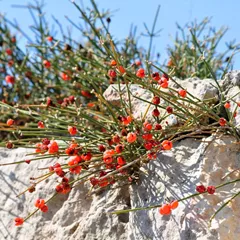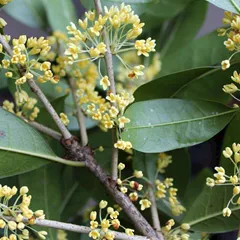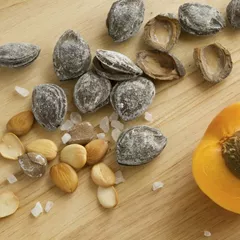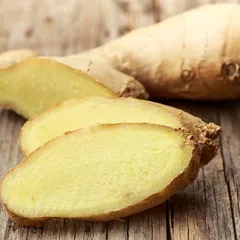Exterior-Cold
The information provided here is not a replacement for a doctor. You shouldn't use it for the purpose of self-diagnosing or self-medicating but rather so you can have a more informed discussion with a professional TCM practitioner.
At a glance
Preliminary reading: What is a pattern? The concept of Exterior The concept of Cold evils
Key attributes
Chinese name: 表寒 Pinyin name: Biǎo Hán
Pattern nature: Full
Pattern hierarchy: General pattern
Common combinations: Exterior Cold with Interior Dampness in Summer
Causes
Common causes: External Wind and Cold
Diagnosis
Common symptoms: Fever Chills No sweat No thirst Stiff neck and three other symptoms
Pulse type(s): Tight (Jin), Floating (Fu)
Tongue description: Pale tongue with thin white coating
Treatment
Treatment principle: Release Cold and Wind from the Exterior, strengthen the Defensive and Nutritious Qi.
Common formulas: Ma Huang Tang Gui Zhi Tang
Pathology
This pattern is classified as ‘Exterior’ not because it derived from an external pathogenic factor but because its manifestations are located in the ‘Exterior’ of the body (the skin, muscles and channels).
'Cold' here is an exterior pathogenic factor. Spontaneous 'Fever' and aversion to cold are the typical manifestations. The Cold constrains the skin pores and thus there is no sweat.
Aversion to cold refers to the sudden chilliness and dislike coldness when patients get sick with a cold or other acute diseases. ‘Fever’ (发热 /Fa Re) does not necessarily indicate an actual fever, but rather the patients' objective feeling of the heat.
Wind is a pathology that commonly accompanies Cold Evil. External Wind can also refer to the proliferation of various bacteria and viruses in additional to actual windy environment. The fact that the Chinese character for Wind is a small insect might perhaps suggest that they suspected the existence of external pathogens such as germs and viruses.
The combined Wind-Cold invasion is an Exterior-Excess pattern and Ma Huang Tang is commonly used.
If the pattern is rather Exterior-Empty, which means the Cold exists due to lack of Yang element, Gui Zhi Tang is more recommended.
Causes
External Wind and Cold: Prolonged exposure to windy and cold environment gives rise to this pattern.
Diagnosing Exterior-Cold
Diagnosing a pattern in Chinese Medicine is no easy feat and should be left to professional practitioners. In particular one has to know how to differentiate between different types of pulses and tongue coatings, shapes and colors as well as learn to read from a long list of seemingly unrelated symptoms.
Pulse type(s): Tight (Jin) or floating (Fu)
Tongue description: Pale tongue with thin white coating
Main symptoms: Fever Chills No sweat No thirst Stiff neck Feeling of heat Aversion to cold Generalized body pain
Diagnosis commentary: Key characteristic symptoms of this pattern are the pronounced aversion to cold, body aches, no thirst and no sweat.
Treating Exterior-Cold
Treatment principle
Release Cold and Wind from the Exterior, strengthen the Defensive and Nutritious Qi.
Herbal formulas used to treat Exterior-Cold



The top herbs in Ma Huang Tang are Ephedra (Ma Huang), Cinnamon Twigs (Gui Zhi) and Apricot Seeds (Xing Ren)
Ma Huang Tang
Source date: 220 AD
Number of ingredients: 4 herbs
Key actions: Releases exterior cold. Treats wheezing.
Formula summary
Ma Huang Tang is a 4-ingredient Chinese Medicine formula. Invented in 220 AD, it belongs to the category of formulas that clear Wind-Cold.
Besides Exterior-Cold, Ma Huang Tang is also used to treat Wind-Cold invading the Lungs or Wind-Cold.



The top herbs in Gui Zhi Tang are Cinnamon Twigs (Gui Zhi), White Peony Roots (Bai Shao) and Fresh Ginger (Sheng Jiang)
Gui Zhi Tang
Source date: 220 AD
Number of ingredients: 5 herbs
Key actions: Releases pathogens from the muscle layer. Regulates the Nutritive and Protective Qi.
Formula summary
Gui Zhi Tang is a 5-ingredient Chinese Medicine formula. Invented in 220 AD, it belongs to the category of formulas that clear Wind-Cold.
Besides Exterior-Cold, Gui Zhi Tang is also used to treat Greater Yang Attack of Wind or Exterior-Empty.
Consequence patterns
If left untreated Exterior-Cold can lead to Wind Cold invading the Lungs
